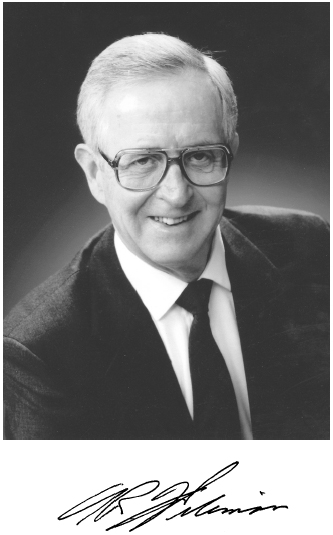
1926–2012
Elected in 1999
“For contributions to the understanding of lightning and its effects on electric power system performance.”
BY LIONEL O. BARTHOLD
ANDREW R. (BOB) HILEMAN died in Monroeville, Pennsylvania, on February 3, 2012 at the age of 85. He was born on August 28, 1926, in New Bethlehem, Pennsylvania, son of Andrew Z. and Margaret N. Hileman.
During his extraordinary half-century career, Bob Hileman made significant contributions to world understanding of lightning’s impact on power lines and to the protection of power systems against electrical surges in general. His efforts helped shape transmission line design practices that to this day reduce vulnerability to lightning flashovers. Equally significant was his work on the application of surge arresters for protection of electrical equipment—work that encouraged both improvements in protective devices and economies in major electrical substation equipment.
As a leading contributor to both US and international professional societies and standards organizations, Bob was among the first to recognize the need for, and to apply, probabilistic methods in the coordination of insulation with protective devices. His long list of technical papers on these subjects culminated in publication of Insulation Coordination for Power Systems in 1999—the most comprehensive book ever written on the subject. It is still widely used and referred to throughout the industry.
Hileman, a veteran of World War II, earned his BSEE from Lehigh University in 1951 and MSEE from the University of Pittsburgh in 1955, then studied at the University of Berlin in 1966–1967 under a Benjamin G. Lamme Fellowship. He later lectured in Penn State University’s Advanced Power Engineering Program. After a distinguished career with Westinghouse Electric Corporation, he retired in 1989 to pursue a career in consulting.
Bob was elected a Fellow of the Institute of Electrical and Electronics Engineers (IEEE), chaired the Power Engineering Society’s Protective Devices Committee, and was an active member of virtually all of IEEE’s committees dealing with lightning and insulation coordination. He also chaired the American National Standards Institute (ANSI) Committee C92 on Insulation Coordination and was a principal author of its standards. His expertise was recognized internationally as well; he served on the International Electrotechnical Commission (IEC), was US representative on CIGRÉ’s1 Study Committee 33 on Insulation Coordination, and lectured in both Europe and South Africa.
Recognition of Hileman’s extensive impacts on power engineering are evidenced by the awards granted him by his peers. In addition to his election to the National Academy of Engineering in 1999, he received IEEE’s Herman Halperin Award and Standards Medallion and was elected to the IEEE Surge Protection Hall of Fame. CIGRÉ honored him with its Attwood Associate Award and, from the CIGRÉ US national committee, the Philip Sporn Award “For cumulative career contributions to the advancement of the concept of system integration in the theory, design, and/or operation of large, high-voltage electric systems in the United States.”
Bob Hileman was a skilled lecturer, a gentleman, and a mentor to countless young engineers. Those who knew and worked with him were enriched by his keen insight, his courtesy, his spontaneous sense of humor, and his thoughtfulness.
________________
1Conseil International des Grands Réseaux Électriques
He is survived by his wife, Thelma “Becky” B. Hileman; daughters Judith (Charles) Spiegal, Linda (Alan) Ackley, and Nancy Hileman (Dan Simmers); grandchildren Evan Andrew Ackley and Aaron Ross Ackley; and sisters Patricia Yanello and Virginia Sprenkle.




